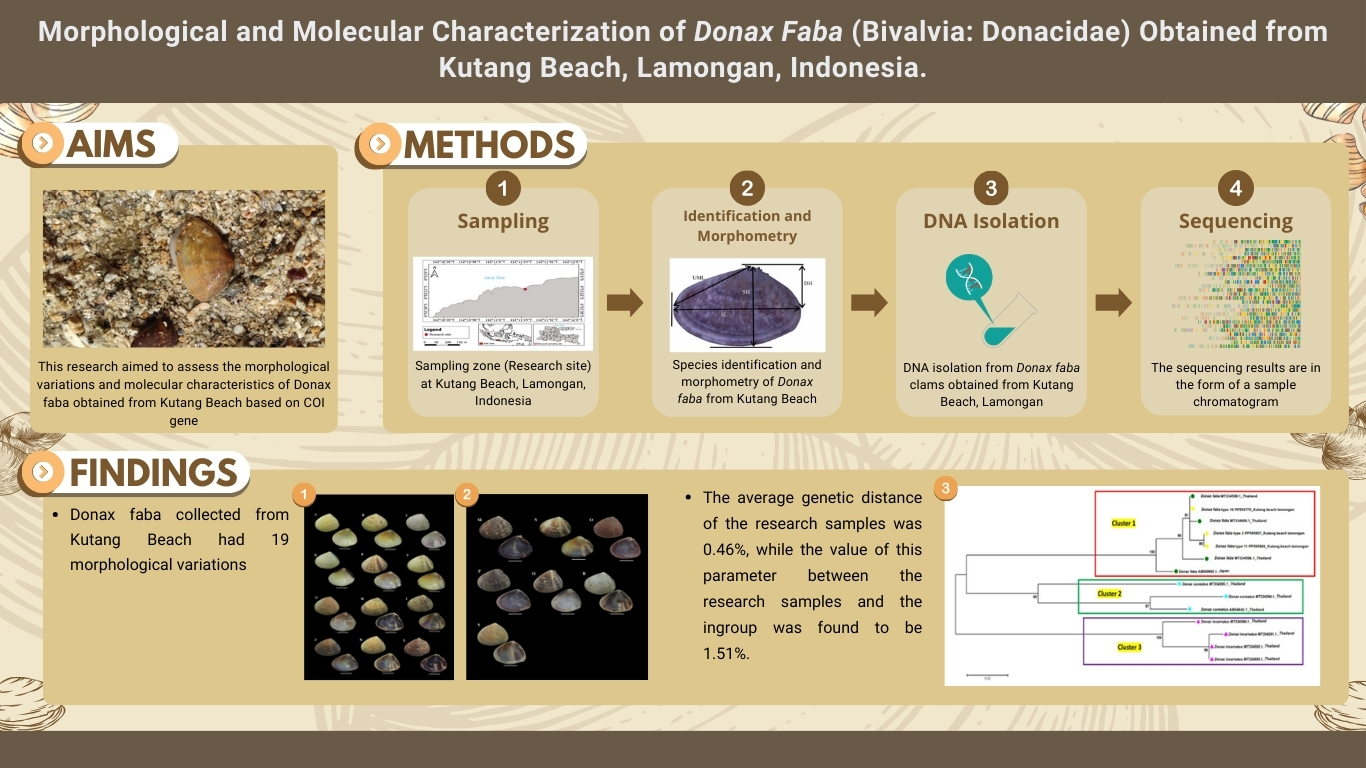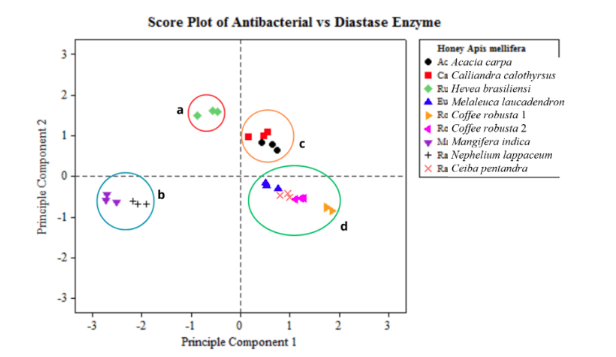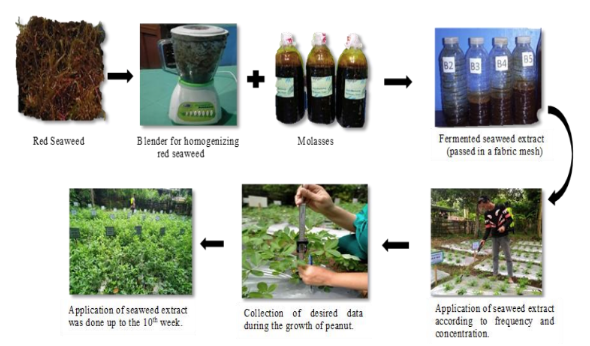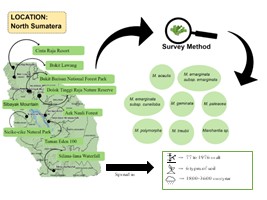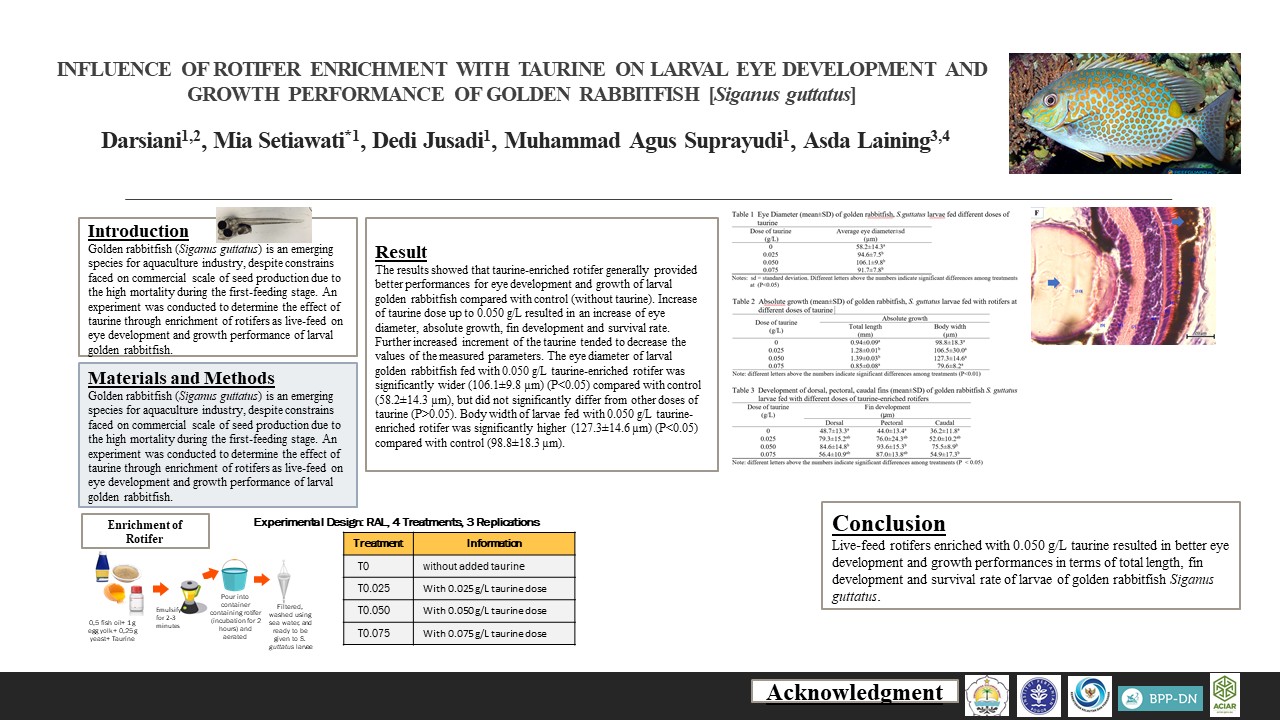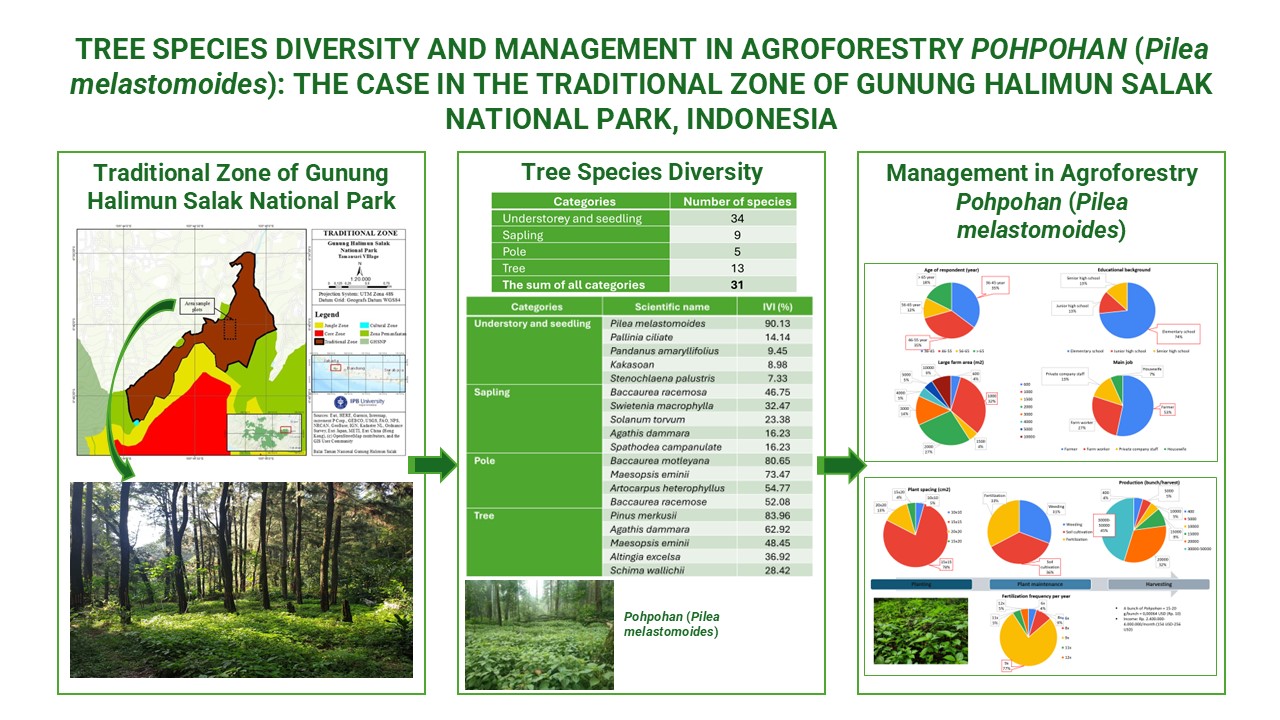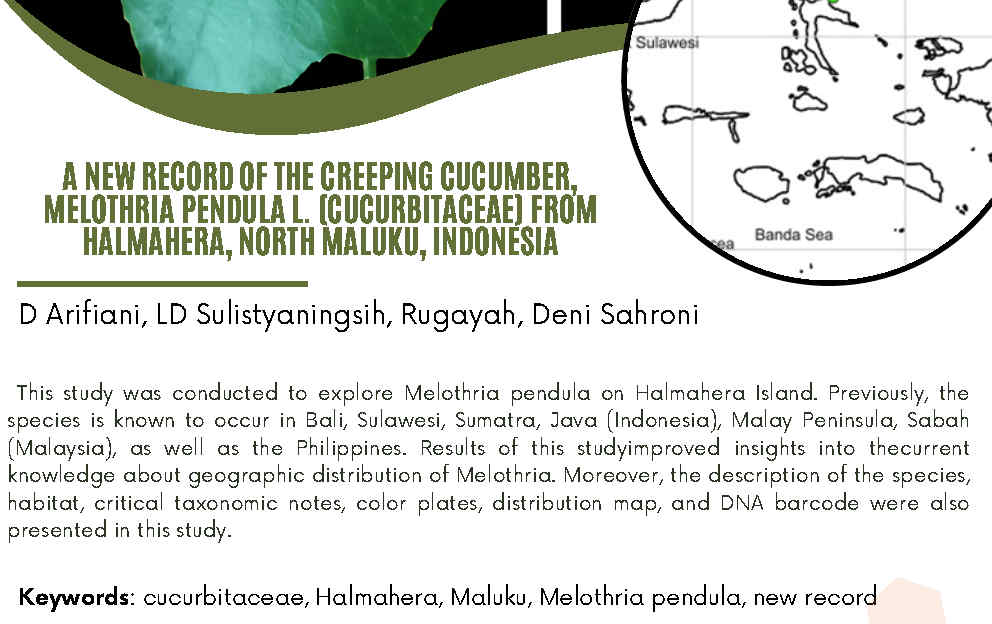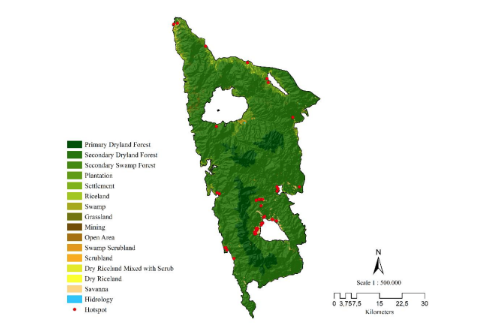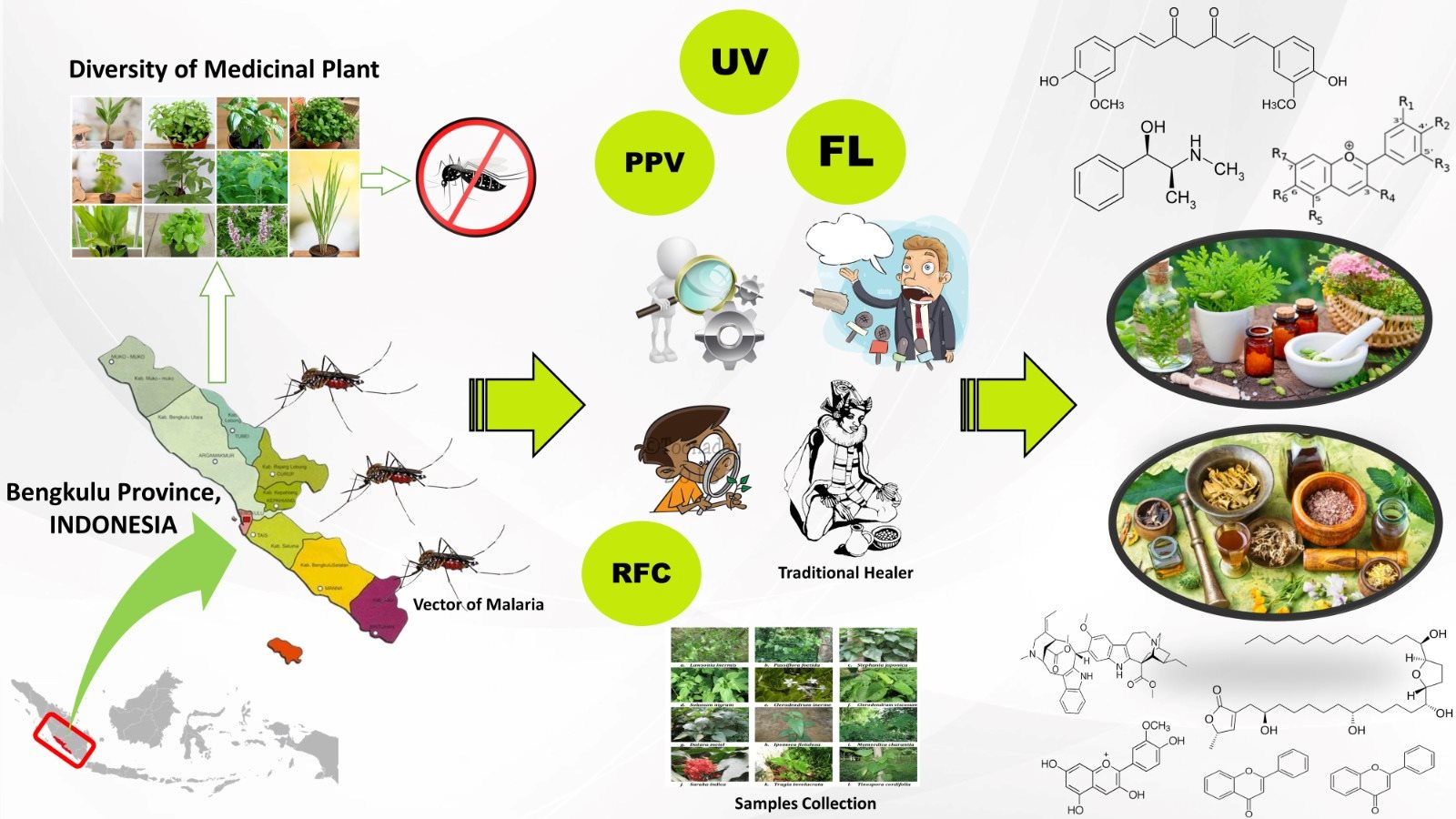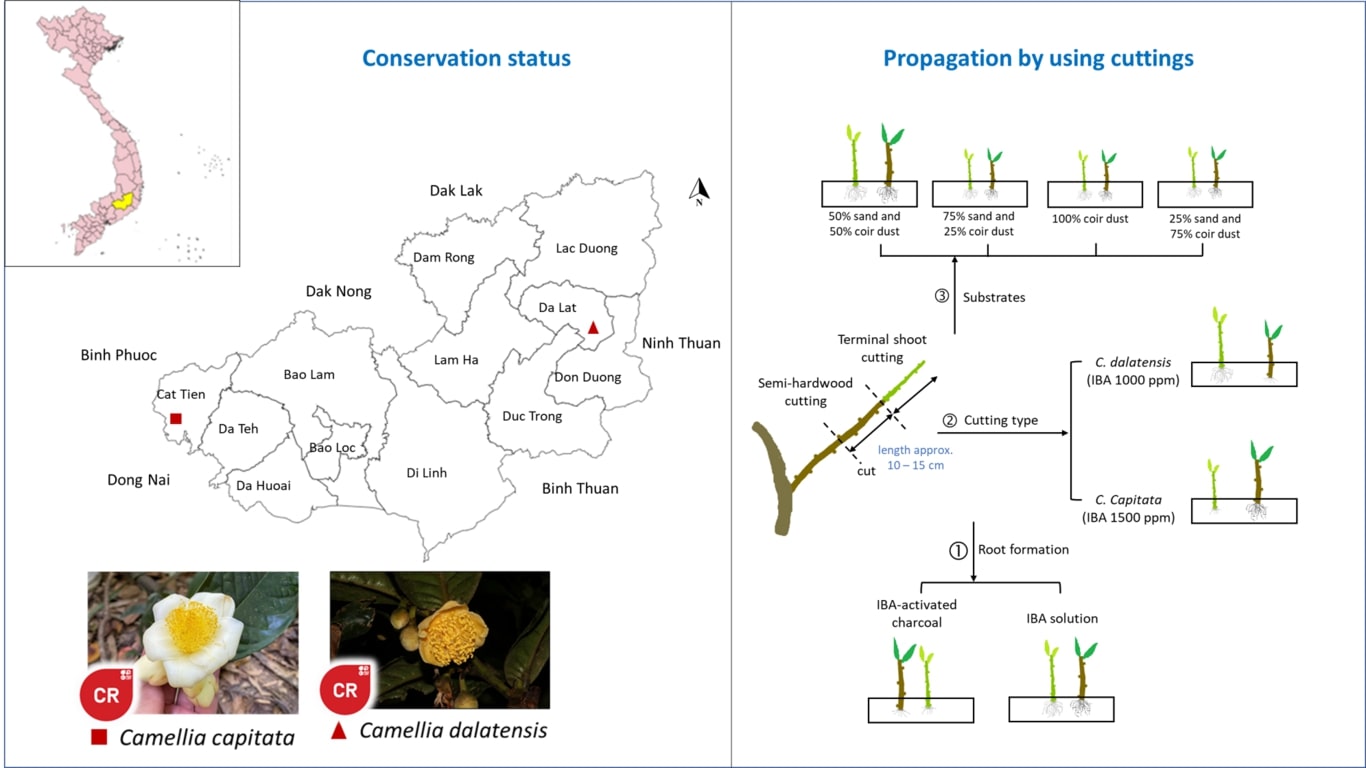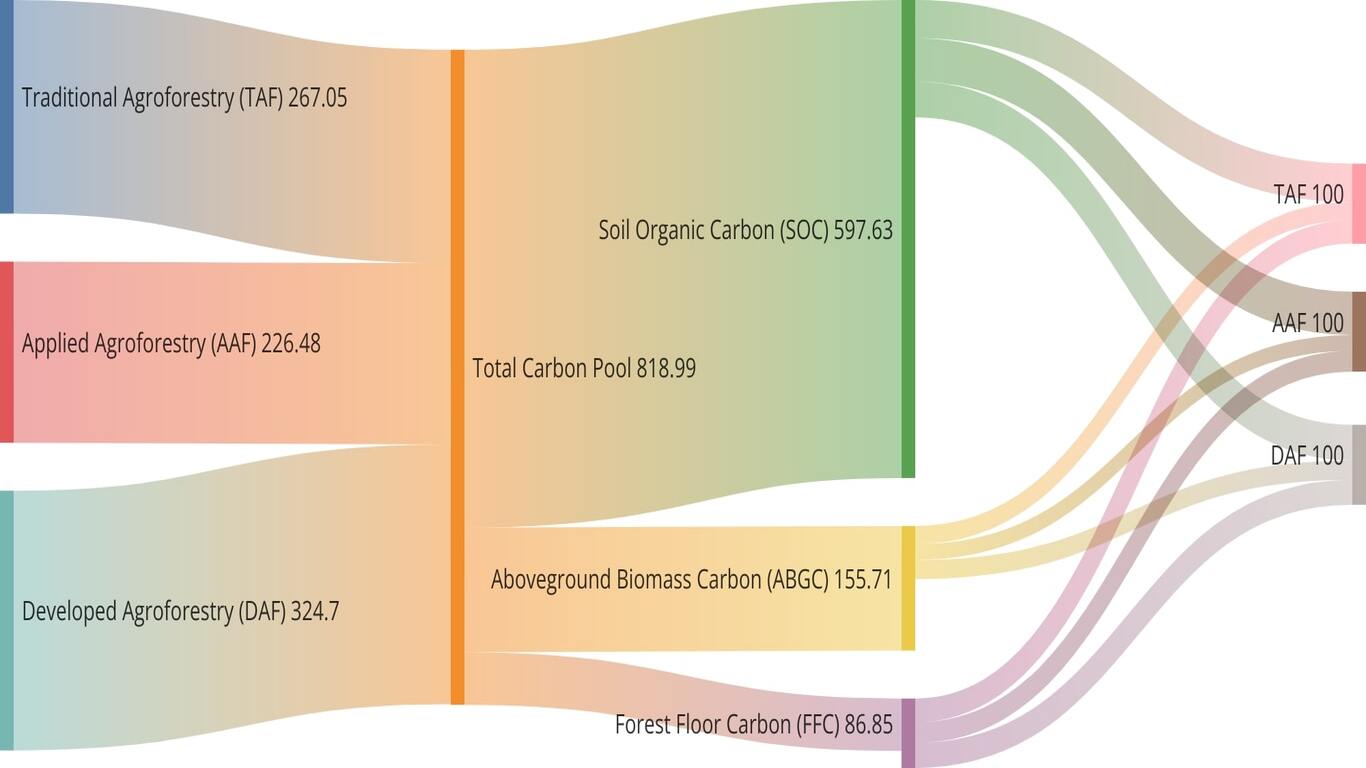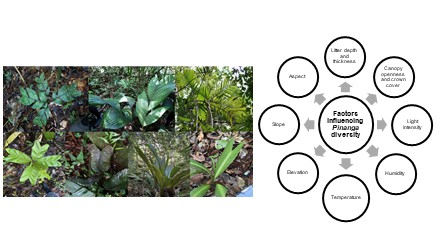A REVIEW OF MARINE NATURAL PRODUCTS AS POTENTIAL SOURCE OF ANTIOXIDANTS
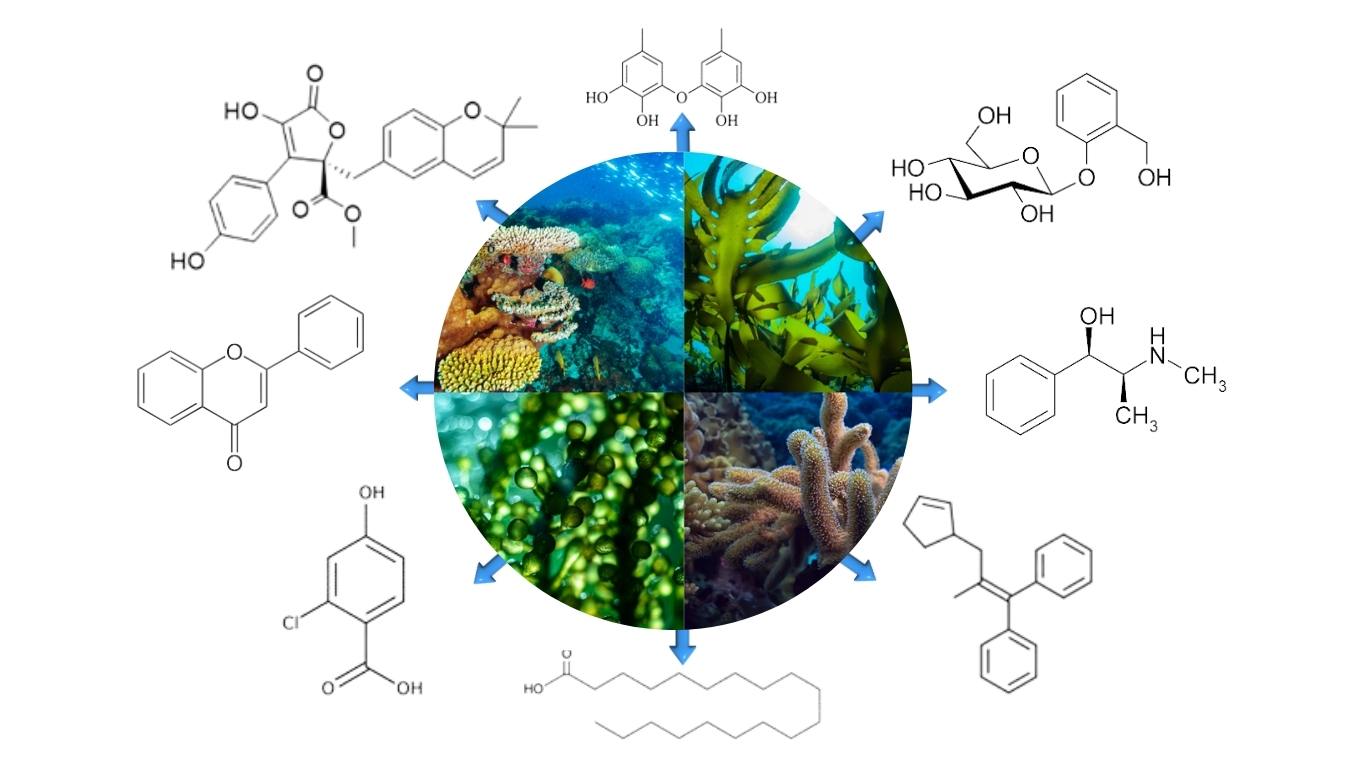
Downloads
Article Highlights
- Marine Natural Products have been the most favorable source of bioactive compounds for drug discovery research.
- Many biologically active chemicals with antioxidant properties can be found in the marine environment.
- A systematic review on potential source of antioxidants linked to marine natural products was carried out.
- Algae, fungi, sponges, mollusks, and sea cucumbers were found to be abundant sources of antioxidants.
- Integrate these discoveries into practical applications for enhancing human health and well-being.
Abstract
Several diseases have been linked to oxidative stress, resulting from an imbalance between the creation of the body’s antioxidant defense mechanisms and reactive oxygen species (ROS). Due to their distinct metabolic makeup and wide range of biological adaptations, marine organisms have attracted interest as possible sources of new antioxidants. This systematic review aims to evaluate the antioxidant potential of marine natural products. To find relevant research published between 2002 and 2022, a thorough search strategy based on the PRISMA standards was used across databases, including PubMed, Google Scholar, Mendeley, and Science Direct. A total of 18 studies were extracted and included in the review. The results consistently showed that marine natural compounds had vigorous antioxidant activity. Algae, fungi, sponges, mollusks, and sea cucumbers were shown to be abundant sources of antioxidants in marine environments. Flavonoids, alkaloids, phenols, tannins, steroids, saponins, glycosides, terpenoids, and carotenoids are only a few types of marine natural products that have been discovered to possess strong antioxidant properties. This systematic review provides compelling evidence for the antioxidant potential of marine natural products. The research validates their potential as sources of novel antioxidants with various bioactive properties. Unlocking the full potential of marine natural products and integrating these discoveries into practical applications for enhancing human health and well-being calls for further research.
Downloads
Abdillah, S., Nurhayati, A.P.D., Nurhatika, S., Setiawan, E., & Heffen, W.L. 2013. Cytotoxic and antioxidant activities of marine sponge diversity at Pecaron Bay Pasir Putih Situbondo East Java, Indonesia. journal of pharmacy research. 6(7), 685-689. https://doi.org/10.1016/j.jopr.2013.07.001 DOI: https://doi.org/10.1016/j.jopr.2013.07.001
Alencar, D.B., Melo, A.A., Silva, G.C., Lima, R.L., Pires-Cavalcante, K., Carneiro, R.F., & Saker-Sampaio, S. 2015. Antioxidant, hemolytic, antimicrobial, and cytotoxic activities of the tropical Atlantic marine zoanthid Palythoa caribaeorum. Anais da Academia Brasileira de Ciências. 87, 1113-1123. https://doi.org/10.1590/0001-3765201520140370 DOI: https://doi.org/10.1590/0001-3765201520140370
Alkhalaf, M,I. 2021. Chemical composition, antioxidant, anti-inflammatory and cytotoxic effects of Chondrus crispus species of red algae collected from the Red Sea along the shores of Jeddah city. Journal of King Saud University-Science. 33(1), 101210. https://doi.org/10.1016/j.jksus.2020.10.007 DOI: https://doi.org/10.1016/j.jksus.2020.10.007
Balakrishnan, D., Kandasamy, D., & Nithyanand, P. 2014. A review on antioxidant activity of marine organisms. Int. J. Chem. Tech. Res. 6(7), 3431-3436.
Begum, S.F.M., & Hemalatha, S. 2022. Marine Natural Products—a Vital Source of Novel Biotherapeutics. Current Pharmacology Reports. 8(5), 339-349. https://doi.org/10.1007/s40495-022-00295-8 DOI: https://doi.org/10.1007/s40495-022-00295-8
Borquaye, L.S., Darko, G., Oklu, N., Anson-Yevu, C., & Ababio, A. 2016. Antimicrobial and antioxidant activities of ethyl acetate and methanol extracts of Littorina littorea and Galatea paradoxa. Cogent Chemistry. 22(1), 1161865. https://doi.org/10.1080/23312009.2016.1161865 DOI: https://doi.org/10.1080/23312009.2016.1161865
Chai, T.T., Kwek, M.T., Ismail, M., Ooi, J.L.S., Amri, A.Y., Manan, F.A., & Wong, F C. 2015. Antioxidant activities of methanol extract and solvent fractions of marine Macroalga, Avrainvillea erecta (Berkeley) A. Gepp and ES Gepp (Dichotomosiphonaceae). Tropical Journal of Pharmaceutical Research. 14(3), 503-509. http://dx.doi.org/10.4314/tjpr.v14i3.20 DOI: https://doi.org/10.4314/tjpr.v14i3.20
Cutignano, A., Nuzzo, G., Ianora, A., Luongo, E., Romano, G., Gallo, C., & Fontana, A. 2015. Development and application of a novel SPE method for bioassay-guided fractionation of marine extracts. Marine drugs. 13(9), 5736-5749. https://doi.org/10.3390/md13095736 DOI: https://doi.org/10.3390/md13095736
Dias D.A, Urban S, Roessner U. 2012. A historical overview of natural products in drug discovery. Metabolites. 2:303 36. https://doi.org/10.3390/metabo2020303 DOI: https://doi.org/10.3390/metabo2020303
Elangovan, M., Noorjahan, A., & Anantharaman, P. 2019. Extraction of metabolites and screening their antioxidant potential from marine macroalgae. International Journal of Scientific & Technology Research. 8, 1059-1064.
El-Shafei, R., Hegazy, H., & Acharya, B. 2021. A review of antiviral and antioxidant activity of bioactive metabolite of macroalgae within an optimized extraction method. Energies. 14(11), 3092. https://doi.org/10.3390/en14113092 DOI: https://doi.org/10.3390/en14113092
Fonseca, S., Amaral, M.N., Reis, C.P., & Custódio, L. 2023. Marine Natural Products as Innovative Cosmetic Ingredients. Marine Drugs. 21(3), 170. https://doi.org/10.3390/md21030170 DOI: https://doi.org/10.3390/md21030170
Hussain M.S, Fareed S, Ansari S, & Khan M.S. 2012. Marine natural products: A lead for anticancer. Indian J Geomarine Sci. 41:27 39.
Jayaseelan E.C., Kothai S., Kavith R., Tharmila S. & Thavaranjit A.C. 2012. Antibacterial activity of some selected algae present in the coastal lines of Jaffna Peninsula. International Journal of Pharmaceutical and Biological Archives. 3: 352 − 356.
Jiménez, C. 2018. Marine natural products in medicinal chemistry. ACS medicinal chemistry letter. 9(10), 959-961. https://doi.org/10.1021/acsmedchemlett.8b00368 DOI: https://doi.org/10.1021/acsmedchemlett.8b00368
Jimeno, J., Faircloth, G., Sousa-Faro, JF., Scheuer, P., & Rinehart, K. 2004. New marine-derived anticancer therapeutics—A journey from the sea to clinical trials. Marine Drugs. 2, 14–29. http://dx.doi.org/10.3390/md201014 DOI: https://doi.org/10.3390/md201014
Karimzadeh, K., & Zahmatkesh, A. 2021. Phytochemical screening, antioxidant potential, and cytotoxic effects of different extracts of red algae (Laurencia snyderiae) on HT29 cells. Research in Pharmaceutical Sciences. 16(4), 400. doi: 10.4103/1735-5362.319578 DOI: https://doi.org/10.4103/1735-5362.319578
Kavitha, J., & Palani, S. 2016. Phytochemical screening, GC-MS analysis, and antioxidant activity of marine algae Chlorococcum humicola. World Journal of Pharmacy and Pharmaceutical Sciences. 5(6), 1154-1167. DOI: 10.20959/wjpps20166-6871
Lakmal, H.C., Samarakoon, KW., Lee, W., Lee, JH., Abeytunga, DTU., Lee, HS., & Jeon, YJ. 2014. Anticancer and antioxidant effects of selected Sri Lankan marine algae. Journal of the National Science Foundation of Sri Lanka, 42(4). DOI: https://doi.org/10.4038/jnsfsr.v42i4.7730
Leelavathi, M., & Prasad, M. 2014. Evaluation of antioxidant properties of marine seaweed samples by DPPH method. International Journal of Pure & Applied Bioscience, 2(6), 132-137.
McKenzie, MJ, Bossuyt, JE Boutron PM, Hoffmann, I, Mulrow, TC. 2021 The PRISMA 2020 statement: an updated guideline for reporting systematic reviews. BMJ 2021;372:n71. doi: 10.1136/bmj.n71 DOI: https://doi.org/10.1136/bmj.n71
Mehbub MF, Lei J, Franco C, Zhang W. 2014. Marine sponge derived natural products between 2001 and 2010: Trends and opportunities for discovery of bioactives. Mar Drugs; 12:4539‑77. https://doi.org/10.3390/md12084539 DOI: https://doi.org/10.3390/md12084539
Mishra, N., Gupta, E., Walag, AMP., Kharwar, RN., Singh, P., & Mishra, P. 2023. A Review of Marine Natural Product Resources with Potential Bioactivity Against SARS-COV-2. Tropical Journal of Natural Product Research, 7(1). http://www.doi.org/10.26538/tjnpr/v7i1.2 DOI: https://doi.org/10.26538/tjnpr/v7i1.2
Mohamed S, Hashim SN, Abdul RH. 2012. Seaweeds: A sustainable, functional food for complementary and alternative therapy. Trends Food Sci Tech; 23(2): 83-96. https://doi.org/10.1016/j.tifs.2011.09.001 DOI: https://doi.org/10.1016/j.tifs.2011.09.001
Mohapatra, L., Pati, P., Panigrahy, R., & Bhattamisra, SK. 2013. Therapeutic health booster: Seaweeds against several maladies
Montuori, E., de Pascale, D., & Lauritano, C. 2022. Recent Discoveries on Marine Organism Immunomodulatory Activities. Marine Drugs, 20(7), 422. https://doi.org/10.3390/md20070422 DOI: https://doi.org/10.3390/md20070422
Murniasih, T., Putra, M., & Pangestuti, R. 2015. Antioxidant capacities of Holothuria sea cucumbers. In Annales bogorienses (Vol. 19, No. 2, pp. 21-26).
Muthiyan, R., Mahanta, N., Nambikkairaj, B., Immanuel, T., & De, AK. 2018. Antioxidant and anti-inflammatory effects of a methanol extract from the marine sponge Hyrtios erectus. Pharmacognosy Magazine. 2018. 14(58). DOI:10.4103/pm.pm_133_17 DOI: https://doi.org/10.4103/pm.pm_133_17
Ngo D.H., Vo T.S., Ngo D.N., Wijesekara I., Kim S.K. Biological activities and potential health benefits of bioactive peptides derived from marine organisms, International Journal of Biological Macromolecules. 2012. 51, 378-383. https://doi.org/10.1016/j.ijbiomac.2012.06.001 DOI: https://doi.org/10.1016/j.ijbiomac.2012.06.001
Nie, Y., Yang, W., Liu, Y., Yang, J., Lei, X., Gerwick, WH., & Zhang, Y. 2020. Acetylcholinesterase inhibitors and antioxidants mining from marine fungi: Bioassays, bioactivity coupled LC–MS/MS analyses and molecular networking. Marine Life Science & Technology. 2, 386-397. https://doi.org/10.1007/s42995-020-00065-9. DOI: https://doi.org/10.1007/s42995-020-00065-9
Oliveira, A.L.L.D., Felício, R.D., & Debonsi, H.M. 2012. Marine natural products: chemical and biological potential of seaweeds and their endophytic fungi. Revista Brasileira de Farmacognosia. 22, 906-920. https://doi.org/10.1590/S0102-695X2012005000083 DOI: https://doi.org/10.1590/S0102-695X2012005000083
Paul, V.J, Puglisi, M.P, Ritson, W.R. 2006. Marine chemical ecology. Nat Prod Rep. 23:153 80. 4. https://doi.org/10.1039/B404735B DOI: https://doi.org/10.1039/b404735b
Ponnusamy, K., Kamala, K., Munilkumar, S., & Pal, A.K. 2016. Antioxidant properties from tissue extract of cephalopods around Madras atomic power station, Kalpakkam coast. Int. J. Pharm. Res. Health Sci. 4, 1086-1091.
Rajasekaran, S. 2022. Phytochemical Screening, Gc-Ms Analysis and Antioxidant Activity of Marine Algae Obtained from Coastal Andhra Pradesh, India. Pharmacognosy Journal.14(3). DOI : 10.5530/pj.2022.14.83. DOI: https://doi.org/10.5530/pj.2022.14.83
Rotter, A., Barbier, M., Bertoni, F., Bones, A.M., Cancela, M.L., Carlsson, J. & Vasquez, M.I. 2021. The essentials of marine biotechnology. Frontiers In marine science. 2021. 158. https://doi.org/10.3389/fmars.2021.629629 DOI: https://doi.org/10.3389/fmars.2021.629629
Selvan G.P., Ravikumar S., Ramu A., Neelakandan P. 2012. Antagonistic activity of marine sponge-associated Streptomyces sp. against isolated fish pathogens, Asian Pacific Journal of Tropical Disease. 2, Supplement 2. S724-S728. https://doi.org/10.1016/S2222-1808(12)60252-7 DOI: https://doi.org/10.1016/S2222-1808(12)60252-7
Thakur, N.L., Thakur, A.N., & Müller, W.E.G. 2005. Marine natural products in drug discovery. Natural Product Radiance. 4, 471–477.
Utkina, N.K. 2013. Antioxidant activity of zyzzyanones and makaluvamines from the marine sponge Zyzzya fuliginosa. Natural Product Communications. 8(11), 1934578X1300801113. https://doi.org/10.1177/1934578X1300801 DOI: https://doi.org/10.1177/1934578X1300801113
Yang, L.J., Peng, X.Y., Zhang, Y.H., Liu, Z.Q., Li, X., Gu, Y.C., & Wang, C.Y. 2020. Antimicrobial and antioxidant polyketides from a deep-sea-derived fungus Aspergillus versicolor SH0105. Marine drugs. 18(12), 636. https://doi.org/10.3390/md18120636 DOI: https://doi.org/10.3390/md18120636
Zhang, X., Wang, X., Wang, M., Cao, J., Xiao, J., Wang, Q. 2019. Effects of different pretreatments on flavonoids and antioxidant activity of Dryopteris erythrosora leave. PLoS One. 14, (1). https://doi.org/10.1371/journal.pone.0200174 e0200174. DOI: https://doi.org/10.1371/journal.pone.0200174
Copyright (c) 2024 Rhesa Hinampas, Angelo Mark Walag

This work is licensed under a Creative Commons Attribution-NonCommercial-NoDerivatives 4.0 International License.
Authors who publish with this journal agree with the following terms:
- Authors retain copyright and grant the journal right of first publication, with the work 1 year after publication simultaneously licensed under a Creative Commons attribution-noncommerical-noderivates 4.0 International License that allows others to share, copy and redistribute the work in any medium or format, but only where the use is for non-commercial purposes and an acknowledgement of the work's authorship and initial publication in this journal is mentioned.
- Authors are able to enter into separate, additional contractual arrangements for the non-exclusive distribution of the journal's published version of the work (e.g., post it to an institutional repository or publish it in a book), with an acknowledgement of its initial publication in this journal.
- Authors are permitted and encouraged to post their work online (e.g., in institutional repositories or on their website) prior to and during the submission process, as it can lead to productive exchanges, as well as earlier and greater citation of published work (See The Effect of Open Access).

